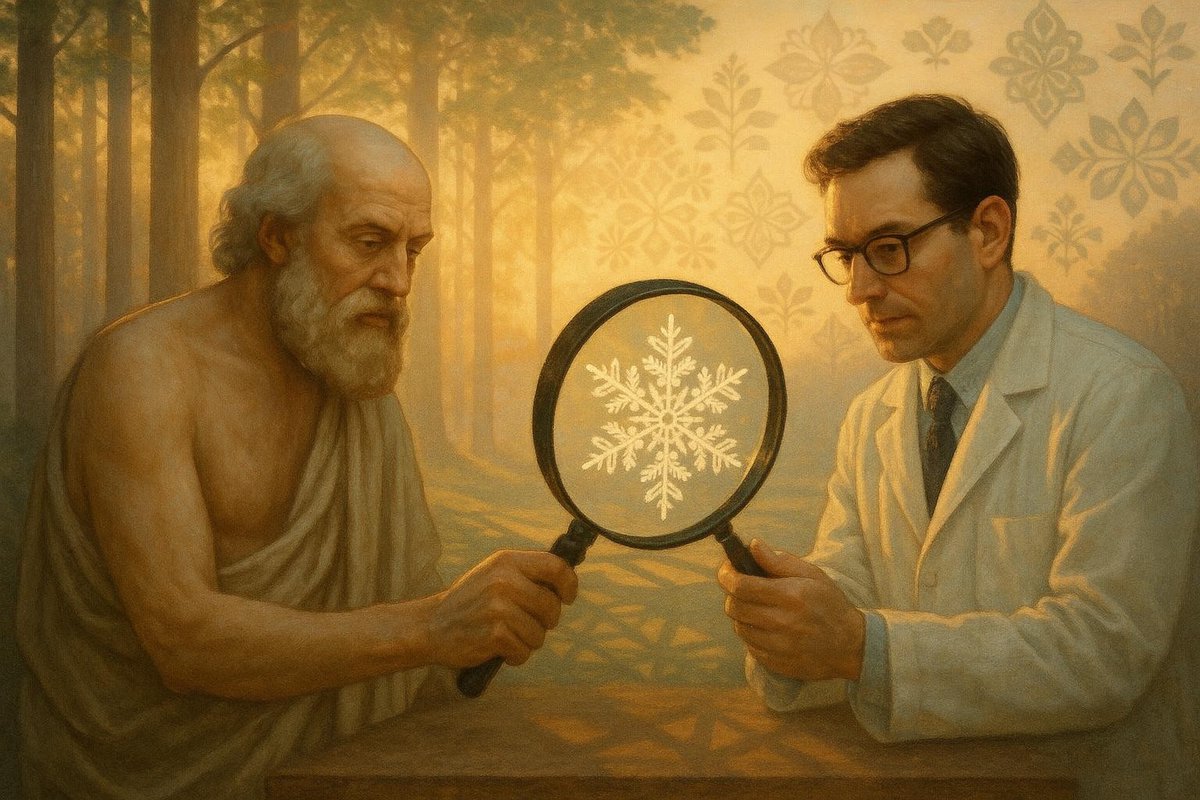
The Hypothesis: A World of Hidden Balance
Have you ever gazed at a snowflake and wondered at its perfect symmetry? Many people believe that symmetry is just a visual pleasure, but as time goes on, we discover it is a more profound concept weaving through every aspect of life.
Historically, symmetry was appreciated in art and architecture, admired for its aesthetic appeal. Yet, the scientific community began to see it as a crucial principle in understanding the universe. The Greeks, for instance, used symmetry to describe the cosmos, from Plato’s forms to Euclidean geometry.
- The Greeks’ understanding laid the groundwork for symmetry in both art and science.
- Artists like Leonardo da Vinci used symmetry to achieve balance and harmony in artworks.
- Philosophers pondered symmetry as a representation of perfection and truth.
The hypothesis that symmetry could bridge these disciplines was not obvious at first, but historical context and human curiosity fueled this exploration. Why does symmetry matter? Because it suggests a hidden order in the universe, a silent language spoken by nature itself.
Setup & Method: Observing the Patterns
Interestingly, the journey to uncover the role of symmetry involved more than just idle observation. Scientists from various fields, including biology and physics, began to systematically study symmetrical patterns.
Consider Alan Turing, the mathematician who used mathematical models to explain morphogenesis, the process by which organisms develop symmetrical patterns. His work showed that even the seemingly chaotic growth of living forms followed symmetric rules.
- Systematic observation of natural phenomena revealed symmetrical patterns.
- Mathematics provided a framework to predict and understand these patterns.
- Collaborations between fields fostered new insights into symmetry.
By viewing symmetry through multiple lenses, researchers began to see connections not only within science but extending into art and philosophy. Symmetrical patterns in nature were mirrored in the balance and harmony artists strive for and the philosophical quest for order and meaning.
Results & Reactions: A Harmonious Revelation
Discoveries such as Turing’s sparked excitement and debate. Suddenly, the universe seemed less random and more like a grand design woven with symmetric threads. But reactions varied.
Debates arose about the implications of these patterns. Did they suggest a deeper, intentional design? Or were they mere coincidences of natural law?
- Turing’s work inspired further research into biological symmetry.
- Artists began experimenting with symmetry, drawing inspiration from natural patterns.
- Philosophers revisited ancient thoughts on symmetry as a cosmic truth.
Some saw these findings as proof of a divine hand, others as the beauty of mathematics expressed in nature. Whatever the belief, the results bridged gaps—creating a conversation across disciplines that once seemed isolated.
Implications: The Echo of Symmetry
Today, the implications of symmetry extend beyond academic curiosity. They challenge us to rethink our understanding of interconnectedness in the natural world.
Symmetry shows up in modern technology, from the design of algorithms to the structure of molecules in pharmaceuticals. It inspires artists and continues to provoke philosophical inquiry into the nature of reality.
- Emerging technologies leverage symmetry for innovation and efficiency.
- Artists explore new mediums and forms influenced by natural symmetry.
- Philosophers question the role of symmetry in defining existence.
The discovery of symmetry as a universal connector invites us to explore how seemingly disparate fields of knowledge can inform one another, leading to richer, more holistic understandings of our world.
Fuel Someone Else’s Curiosity
Inspired by the elegant dance of symmetry in nature? Share this journey of discovery with others. Encourage them to look beyond the surface and see the threads that connect us all. Who knows what new insights you’ll uncover together?

Leave a Reply